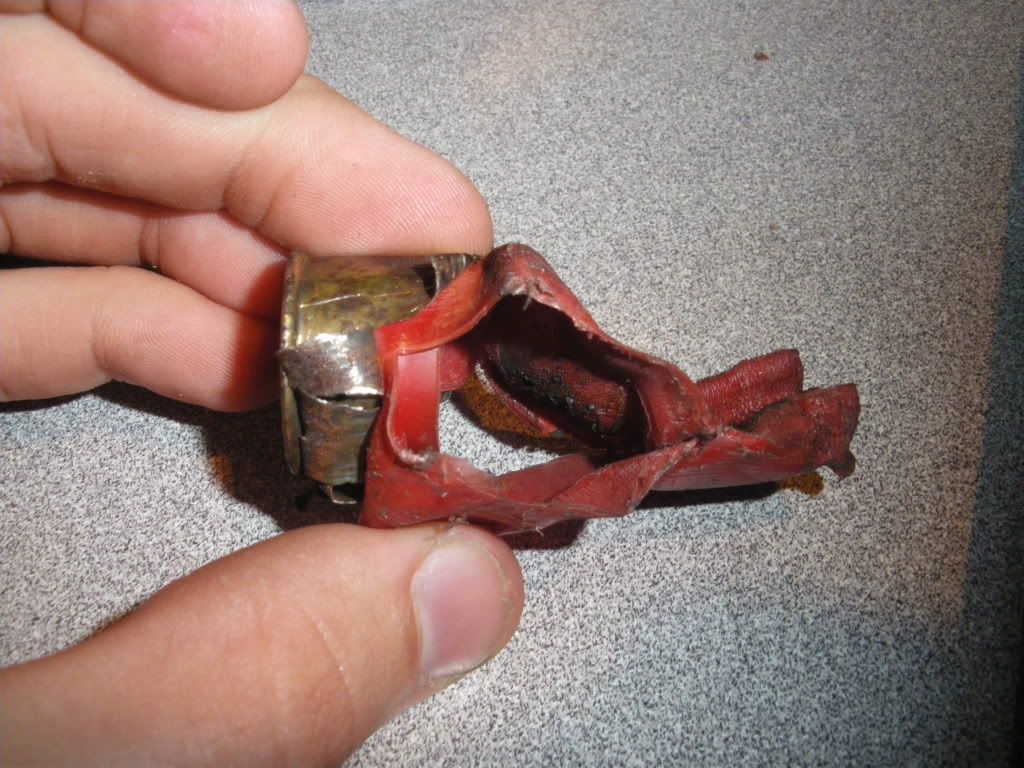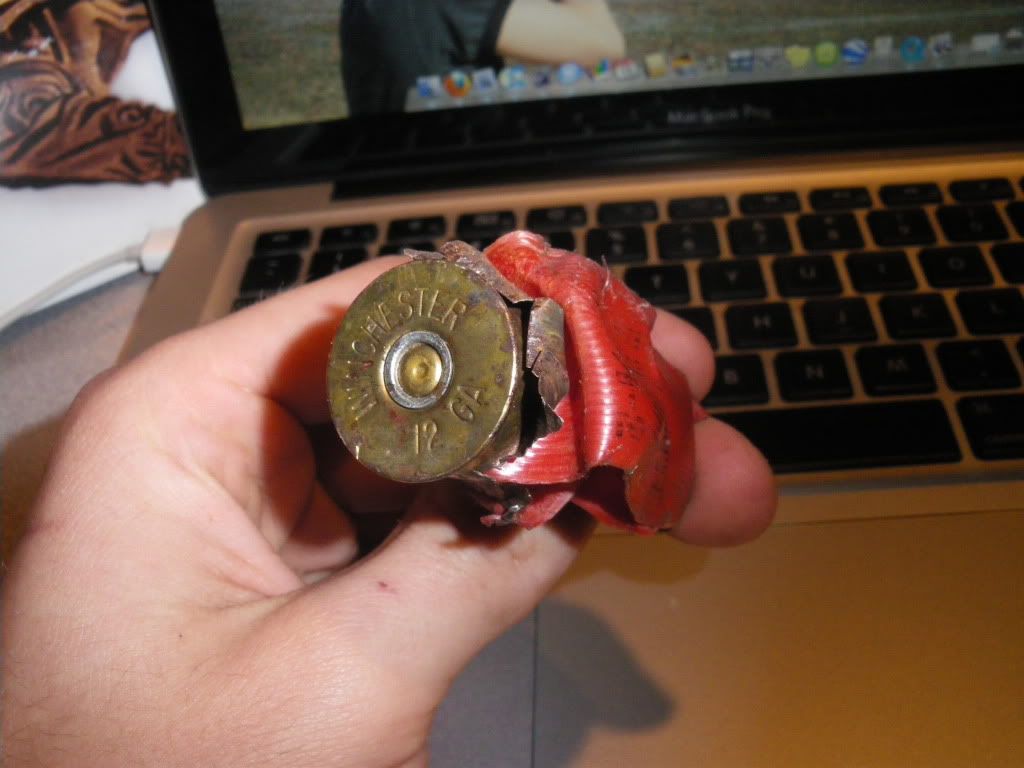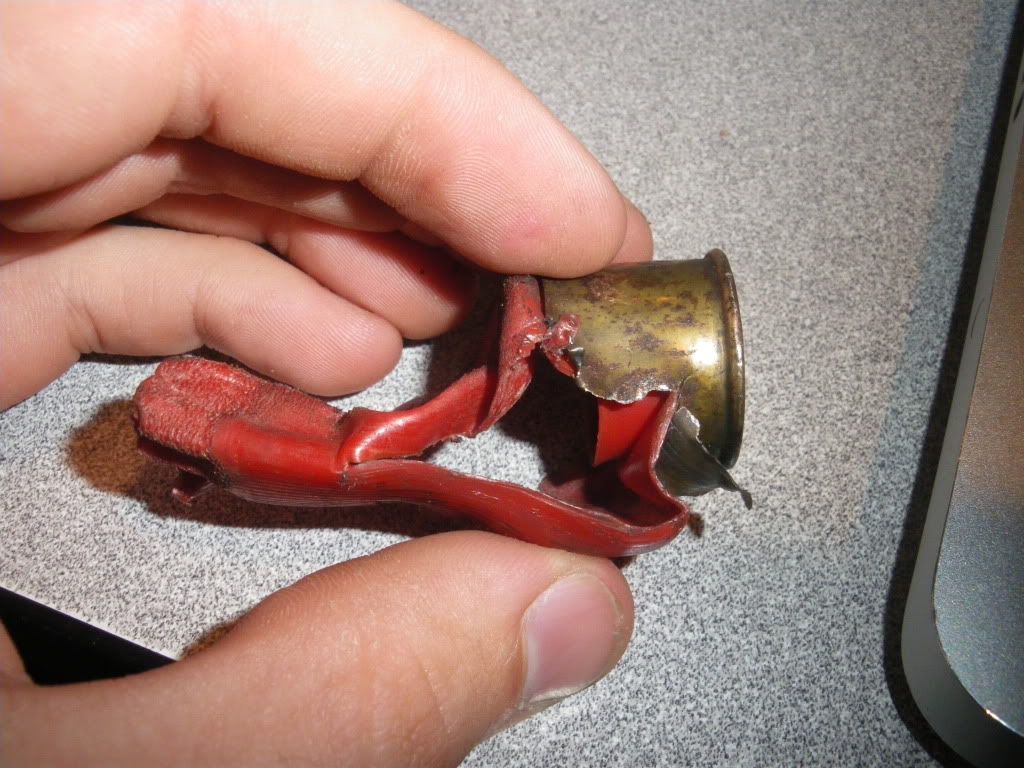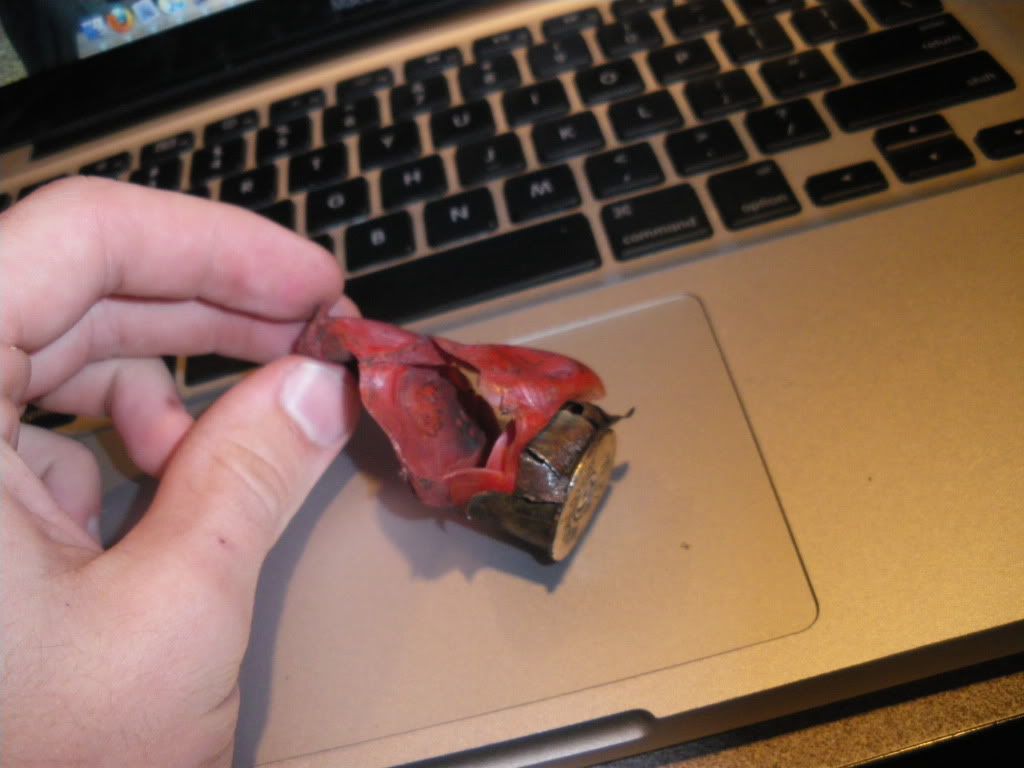So I was at the range today shooting my Baikal EAA semi-auto 12 ga. I had a couple old rusty (I had since cleaned off the rust with steel whool, it was still tarnished though) 12 ga hunting loads from duck hunting season of 09. I had a new shooter there. He was shooting target loads and I gave him a duck load to pop in and try out to get a feel for a shot shell that had some bite to it. He popped it in and I hear a kaboom. He said "I think we had a misfire" I thought he was joking because it obviously went off. He showed me the gun and I found this sucker stuck inside the gun with the bolt closed on it....





Heres what I think happened. I was not shooting the gun I can only piece together what may have happened before the shot..
*Even though I did clean the rust off the shotshell, there may have still been enough to keep the bolt from completely into battery (you know the rust hanging up on the rim of the chamber)
*When the gun was fired the pressure sent the shot out of the barrel, and blew a hole in the side of the hull because the bolt wasnt fully into battery.
*The bolt was CLOSED that means there wasnt enough pressure to cycle the action and have it hold open....and that means a lot of pressure escaped from the breech.
*There was unburnt powder everywhere, which means the hole happened fairly quickly in the process and blew powder everywhere before the pressure could build up the charge and fully ignite the powder.
----I know on some platforms like the AR15 firing out of battery can blow up a rifle there was no damage to the shotgun and it performed flawlessly the rest of the day.
WHAT SAY YE?
-Dave





Heres what I think happened. I was not shooting the gun I can only piece together what may have happened before the shot..
*Even though I did clean the rust off the shotshell, there may have still been enough to keep the bolt from completely into battery (you know the rust hanging up on the rim of the chamber)
*When the gun was fired the pressure sent the shot out of the barrel, and blew a hole in the side of the hull because the bolt wasnt fully into battery.
*The bolt was CLOSED that means there wasnt enough pressure to cycle the action and have it hold open....and that means a lot of pressure escaped from the breech.
*There was unburnt powder everywhere, which means the hole happened fairly quickly in the process and blew powder everywhere before the pressure could build up the charge and fully ignite the powder.
----I know on some platforms like the AR15 firing out of battery can blow up a rifle there was no damage to the shotgun and it performed flawlessly the rest of the day.
WHAT SAY YE?
-Dave
